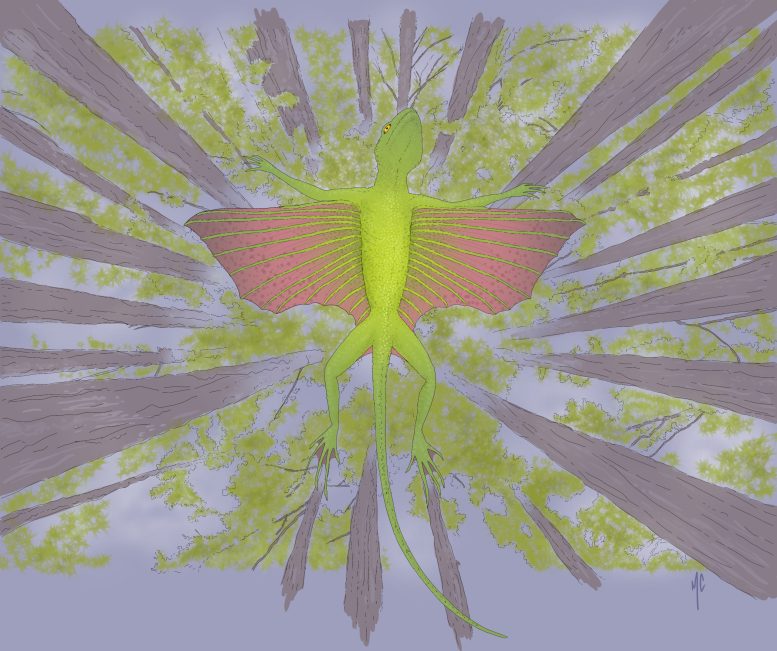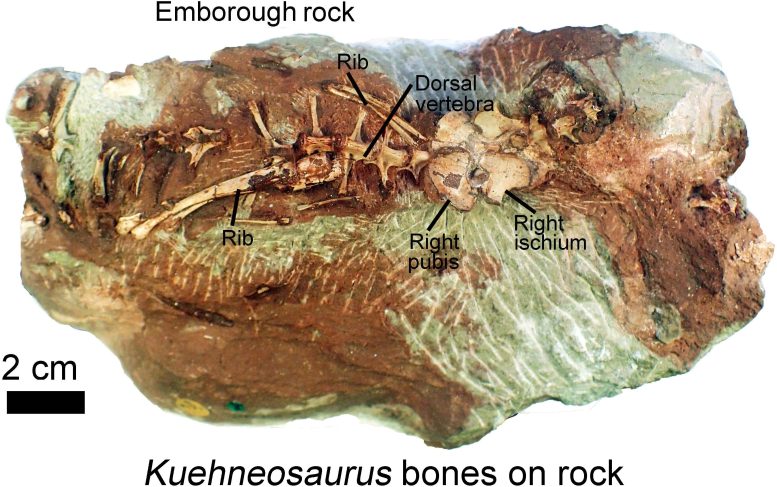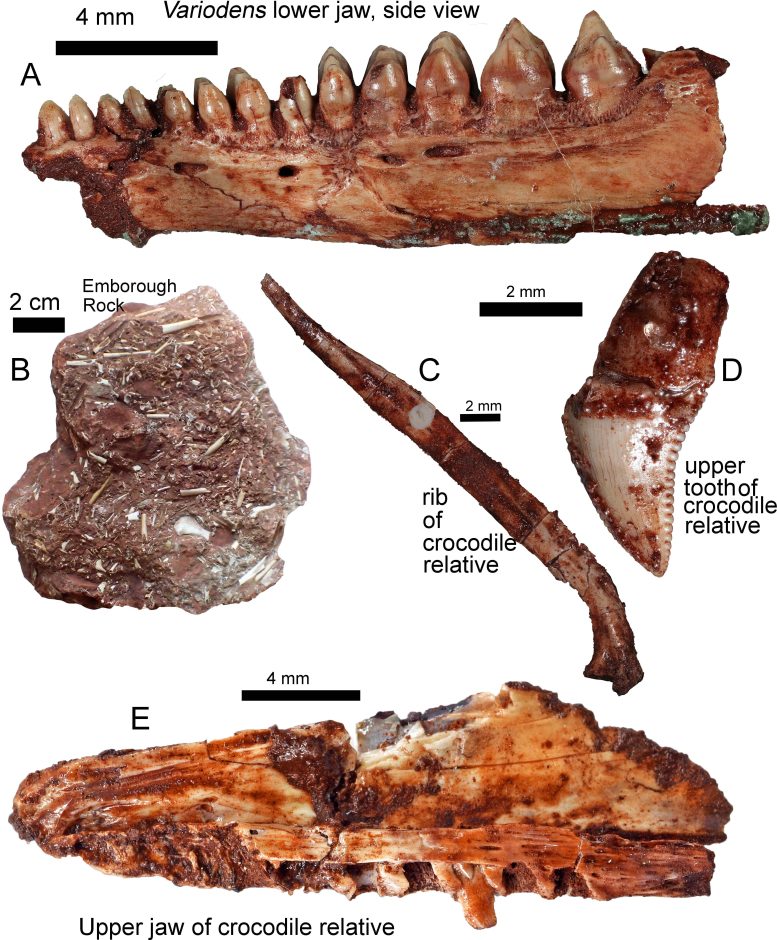
University of Bristol researchers discovered ancient winged-reptiles, Kuehneosaurs, in Somerset’s Mendip Hills, revealing diverse reptilian life on the Mendip Palaeo-island during the Late Triassic period and expanding our understanding of prehistoric ecosystems. Artist’s impression of a gliding reptile Kuehneosaurus. Credit: Mike Cawthorne
Researchers at the University of Bristol have discovered that ancient reptiles, capable of gliding, were once inhabitants of the Mendip Hills in Somerset.
These creatures, known as Kuehneosaurs, resembled lizards but were actually more closely related to the forebears of crocodiles and dinosaurs. They were small in size, small enough to rest comfortably in a human hand. Two distinct species of Kuehneosaurs were identified: one with expansive wing-like structures, and the other with shorter ones. These “wings” were formed by a skin layer stretched over extended side ribs, enabling them to glide from one tree to another.
Like the modern flying lizard Draco from southeast Asia, they most likely wandered about on the ground and climbed trees in search of insect prey. When startled, or if they spotted a tasty insect flying by, they could launch themselves into the air, and land safely 10m away.
Fossil Research by University of Bristol
The discovery was made by University of Bristol Masters student Mike Cawthorne, researching numerous reptile fossils from limestone quarries, which formed the biggest sub-tropical island at the time, called the Mendip Palaeo-island.
The study, published in Proceedings of the Geologists’ Association, also records the presence of reptiles with complex teeth, the trilophosaur Variodens and the aquatic Pachystropheus that probably lived a bit like a modern-day otter likely eating shrimps and small fish.
The animals either fell or their bones were washed into caves and cracks in the limestone.

Showing partial skeleton of gliding reptile Kuehneosaurus on rock from Emborough. Credit: David Whiteside
“All the beasts were small,” said Mike. “I had hoped to find some dinosaur bones, or even their isolated teeth, but in fact I found everything else but dinosaurs.
“The collections I studied had been made in the 1940s and 1950s when the quarries were still active, and paleontologists were able to visit and see fresh rock faces and speak to the quarrymen.”
Insights from Professors and Historical Context
Professor Mike Benton Bristol’s School of Earth Sciences explained: “It took a lot of work identifying the fossil bones, most of which were separate and not in a skeleton.
“However, we have a lot of comparative material, and Mike Cawthorne was able to compare the isolated jaws and other bones with more complete specimens from the other sites around Bristol. He has shown that the Mendip Palaeo-island, which extended from Frome in the east to Weston-super-Mare in the west, nearly 30 km long, was home to diverse small reptiles feeding on the plants and insects. He didn’t find any dinosaur bones, but it’s likely that they were there because we have found dinosaur bones in other locations of the same geological age around Bristol.”

A Jawbone of unusual Triassic reptile Variodens first named from Emborough. B) Typical Emborough rock with many bones. C, D, and E) bones from land-living relatives of crocodiles. Credit: David Whiteside
The area around Bristol 200 million years ago in the Late Triassic was an archipelago of small islands set in a warm sub-tropical sea.
Bristol’s Dr David Whiteside added: “The bones were collected by some great fossil finders in the 1940s and 1950s including Tom Fry, an amateur collector working for Bristol University and who generally cycled to the quarries and returned laden with heavy bags of rocks.
“The other collectors were the gifted researchers Walter Kühne, a German who was imprisoned in Great Britain in the 2nd world war, and Pamela L. Robinson from University College London. They gave their specimens to the Natural History Museum in London and the Geological collections of the University of Bristol.”
Reference: “Latest Triassic terrestrial microvertebrate assemblages from caves on the Mendip palaeoisland, S.W. England, at Emborough, Batscombe and Highcroft Quarries” by Michael Cawthorne, David I. Whiteside and Michael J. Benton, 20 January 2024, Proceedings of the Geologists’ Association.
DOI: 10.1016/j.pgeola.2023.12.003









Perhaps they all died from fatal falls while exploring tall trees. Otherwise, cosedering that the wings were sort of an improvement in their adapdability, one would expect such kinds of reptiles to make it through the evolutonary trend.